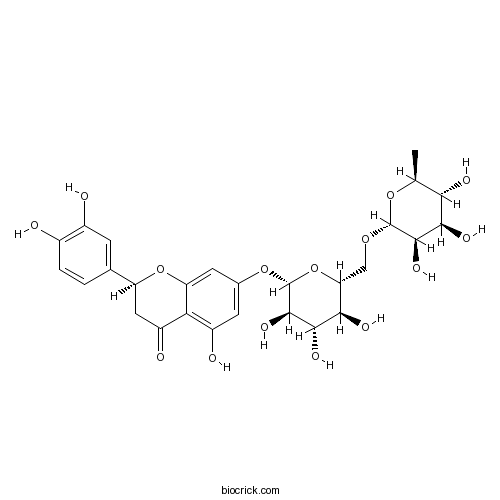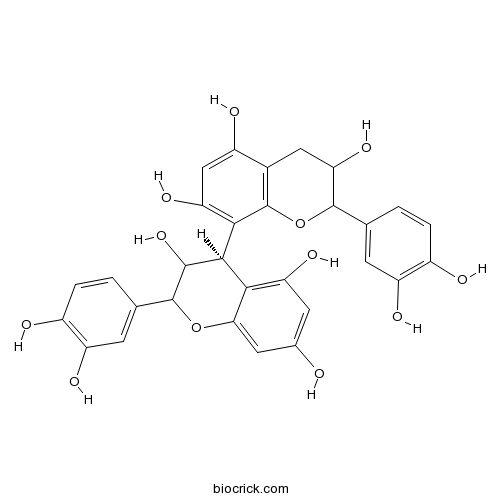Arachniodes exilis
Arachniodes exilis
1. The products in our compound library are selected from thousands of unique natural products; 2. It has the characteristics of diverse structure, diverse sources and wide coverage of activities; 3. Provide information on the activity of products from major journals, patents and research reports around the world, providing theoretical direction and research basis for further research and screening; 4. Free combination according to the type, source, target and disease of natural product; 5. The compound powder is placed in a covered tube and then discharged into a 10 x 10 cryostat; 6. Transport in ice pack or dry ice pack. Please store it at -20 °C as soon as possible after receiving the product, and use it as soon as possible after opening.
Natural products/compounds from Arachniodes exilis
- Cat.No. Product Name CAS Number COA
-
BCN1208
Eriocitrin13463-28-0
Instructions

-
BCN6315
Procyanidin B229106-49-8
Instructions

[Total Flavonoids from Arachniodes exilis Enhance Osteogenic Capacity of Mesenchymal Stem Cells via BMP Signaling].[Pubmed: 30080017]
To investigate the effects and its molecular mechanism of the total flavonoids from Arachniodes exilis( TFA)on the osteogenic differentiation of bone marrow mesenchymal stem cells( BMSCs).
Apoptosis Induction by the Total Flavonoids from Arachniodes exilis in HepG2 Cells through Reactive Oxygen Species-Mediated Mitochondrial Dysfunction Involving MAPK Activation.[Pubmed: 24976852]
Arachniodes exilis is used as a folk medicine in China and proved to have antibacterial, anti-inflammatory, and sedative activities. In the present study, the antitumor effect of the total flavonoids of A. exilis (TFAE) against HepG2 cells was evaluated. The results showed that TFAE inhibited the growth of HepG2 cells in a dosage- and time-dependent manner. Flow cytometry and Hoechst 33342 fluorescence staining results showed that TFAE could significantly increase the apoptosis ratio of HepG2 cells, which is accompanied with increased intracellular reactive oxygen species (ROS) production and decreased mitochondrial membrane potential (ΔΨm). Western blotting indicated that TFAE downregulated the ratio of Bcl-2/Bax, increased cytochrome c release, and activated the caspases-3 and -9. Further analysis showed that TFAE stimulated the mitogen-activated protein kinase (MAPK). However, treatment with NAC (reactive oxygen species scavenger) and MAPK-specific inhibitors (SP600125 and SB203580) could reverse the changes of these apoptotic-related proteins. These results suggested that TFAE possessed potential anticancer activity in HepG2 cells through ROS-mediated mitochondrial dysfunction involving MAPK pathway.
Antioxidant and hepatoprotective activity of ethanol extract of Arachniodes exilis (Hance) Ching.[Pubmed: 20347029]
The study was aimed to investigate the ethanol extract of Arachniodes exilis for the antioxidant and hepatoprotective activity.
[Phenols from the rhizomes of Arachniodes exilis].[Pubmed: 18619264]
To study the chemical constituents of Arachniodes exilis.
Three new polyphenols from the rhizomes of Arachniodes exilis.[Pubmed: 18470809]
Three new polyphenols, araspidin BB (1), arachniodesin A (2) and arachniodesin B (3), together with two known compounds, epicatechin (4) and procyanidin B-2 (5), were isolated from the rhizomes of Arachniodes exilis. The structures of three new compounds were elucidated as 5-methyl-methylene-bis-phlorobutyrophenone (1), 4beta-ethoxycarbonylmethylepicatechin (2) and epicatechin-(4beta --> 8)-4beta-ethoxycarbonylmethylepicatechin (3), on the basis of their spectral analysis and by comparing them with the related model compounds. Compounds 4 and 5 were obtained from the title plant for the first time.


